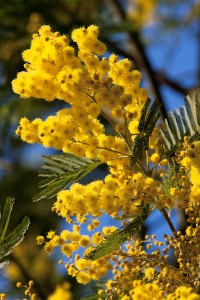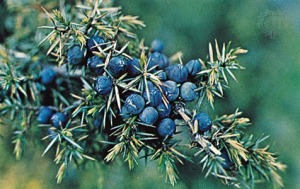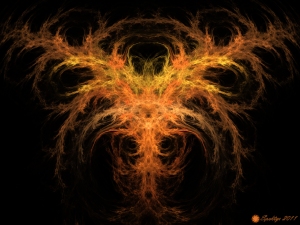Paradox: (noun) A seemingly absurb or self-contradictory statement that, when investigated, may well prove to be true. Tolu, from the luxe niche London house of  Ormonde Jayne, is a paradox in the most mesmerizing way possible. It is an airy, breezy, narcotically heady, heavy, dewy green, freshly orange floral… no, I mean, lushly spicy amberous oriental, no, I mean, a woody, balsam and pine smoky floriental… It is a contradiction that delights, that keeps your nose plastered to your arm, that awes you with its heady, airy opulence, and that recalls the happiest moments of carefree youth while making you feel every inch a sophisticated adult. It is intoxicating. And I cannot recommend it enough.
Ormonde Jayne, is a paradox in the most mesmerizing way possible. It is an airy, breezy, narcotically heady, heavy, dewy green, freshly orange floral… no, I mean, lushly spicy amberous oriental, no, I mean, a woody, balsam and pine smoky floriental… It is a contradiction that delights, that keeps your nose plastered to your arm, that awes you with its heady, airy opulence, and that recalls the happiest moments of carefree youth while making you feel every inch a sophisticated adult. It is intoxicating. And I cannot recommend it enough.
Ormonde Jayne is a high-end, niche London perfume house founded by Linda Pilkington in 2002. She sounds like a fascinating woman. According to her biography on the website, her passion for perfumery began early, as a teenager, and this “led Linda to her first career, growing and selling flowers by the roadside outside her Cheshire family home. She also learnt to make scented candles and bathing oils from craft sets and courses, and created beautiful scented cushions for birthday and Christmas presents.” After years spent travelling and exploring the world, working in places from South America, Africa and the Far East, soy bean farms to ice cream parlours, she returned to London where she began making her own perfumes. She showed her creations at a London trade show where she won repeatedly. And then she was asked to make “the perfect, scented candle” for Chanel itself. After that, in 2002, she opened her own boutique and her perfumes have received praise ever since, including a number of 5- and 4-star reviews from Luca Turin.
Ormonde Jayne’s philosophy is simple:
one of quality and true luxury, the pursuit of beauty and elegance. Our perfume library reposes on an exquisitely simple principle – extraordinarily beautiful scents using speciality oils not widely used in the perfume industry today.
Her goal is to return
to the golden age of perfumery, an elegant era when fragrance creation was a fine art, when essential oils and absolutes were allowed to infuse for a period of months before filtration and then allowed to mature again before bottling, resulting in a deeper, more complex perfume.
Honestly, I cannot recall the last time I was so impressed with a niche house upon my very first sniff, and I plan to investigate her whole line, sample by sample. My first exposure to Frederic Malle, Serge Lutens, Amouage, L’Artisan, Tom Ford, By Kilian, Caron, Montale, and a whole host of other lines never resulted in anything like this. My reactions to those houses varied from indifference to ambivalence, from liking to loving (but not feeling utterly compelled to buy), to truly not understanding what all the fuss was about. Ormonde Jayne is different. It’s not simply that Tolu was bewitching, but that the perfume smells unbelievably luxurious and rich in that genuinely old-school, classique manner of the haute French perfume houses of yesteryear. THIS is what perfumes used to be, almost across the board, and what they are so rarely today.
This is class. It is class, purity, and luxury made simple but, yet, also made fresh and modern at the same time. It’s like smelling the vintage version of some great classic, but made even better. No wonder Luca Turin seems to think that Ormonde Jayne is beating Caron and Guerlain at their own game. I hadn’t believed him when I read that statement a while back and, in truth, I don’t always agree with Mr. Turin, but dammit, he’s absolutely correct in this instance. “Tolu is the kind of fragrance Guerlain or Caron would be turning out regularly if all was right in the world[.]”
If I ever met Ms. Pilkington, I would hug her for returning some of my wide-eyed innocence and belief, after feeling far too long jaded, cynical and oh so depressed at the current state of perfumes in this IFRA-infected world. I would also hug her for her blunt statement in a 2010 interview with the Perfume Shrine that she will never reformulate her perfumes, allergies be damned! “No, we haven’t reformulated anything. I never will. Nor discontinue any in our fragrance rotation. We have 12 fragrances now and I absolutely love each and every one of them. I don’t want to make any changes!” When asked what she would say to a customer asking about allergic reactions, her response was:
I say “If you think madame that it might be give you any risk of an allergic reaction, it would be best if you didn’t buy this perfume”. We talk over some of the ingredients (if the customer knows about any specific trigger or if we think there might be some) and I say “just don’t buy it”. In the end, I don’t give a f*ck if they buy or not, as long as we’re stand our ground and do not mislead. *laughing*
Fascinating as Ms. Pilkington is, nothing is more so than Tolu. I’m hard-pressed not to summarize my entire review in one word: heaven! But, in an attempt to make you understand why I am so thrilled (and why I had to keep stopping writing to sniff my arms), let me tell you more about the scent itself. According to Fragrantica (where it has nary a single bad review), Tolu is classified as a Woody Oriental. (I think there should be a new category entitled “Perfect Paradox.”) It is technically a woman’s eau de parfum, though I think a man could pull this off, especially during the dry-down.
Ormonde Jayne’s website states:
Perfume treasure, this opulent velvety formulation with pure Tolu resin [a Peruvian tree resin] takes you on a sensual Oriental journey. Laced with golden frankincense and amber, the scent’s core is enveloped with a heady mix of orange blossom and clary sage, while intense citrus notes consolidate the harmony.
Top Notes: Juniper berry, orange blossom and clary sage
Heart Notes: Orchid, Moroccan rose and muguet [lily-of-the-valley]
Base Notes: Tolu, tonka bean, golden frankincense and amber.
You know those word association games? I put on Tolu and the very first word that shoots across my brain is “Enchanting!” In fact, that is the first thing I jotted down. There is warm, billowing blanket of orange blossom which immediately rolls onto the skin. It’s not screechy, sharp and overpoweringly cloying like Tom Ford‘s Neroli Portofino, nor is it overly sweet like many synthetic orange scents. It’s also not light and imperceptible like the orange in a few niche perfumes. It’s heady in a soft way, and is one of the brightest, freshest orange blossom scents I’ve smelled in a long time. The sillage is also powerful, which makes me ecstatic as, far too often for my liking, orange blossom is merely a faint hint amongst many supporting notes. Not here. It is the star, stage center, with the brightest lights shining on it.
skin. It’s not screechy, sharp and overpoweringly cloying like Tom Ford‘s Neroli Portofino, nor is it overly sweet like many synthetic orange scents. It’s also not light and imperceptible like the orange in a few niche perfumes. It’s heady in a soft way, and is one of the brightest, freshest orange blossom scents I’ve smelled in a long time. The sillage is also powerful, which makes me ecstatic as, far too often for my liking, orange blossom is merely a faint hint amongst many supporting notes. Not here. It is the star, stage center, with the brightest lights shining on it.
I must confess at the outset that I have a monumental weakness for orange blossom that supercedes many other ingredients or notes that I love. And the orange blossom here reminds me strongly of the oils or essences used in my favorite body cream, Couvent de Minimes Orange Blossom. Here, as there, there is a purity to the scent that makes it clear that real oils were used in the product. It calls to mind my childhood in Cannes with visits to Provence; I am immediately transported back to my old home at the end of Spring. Summer is around the corner, and there is a vast sea of orange trees in bloom along side golden mimosas bushes swaying in the wind under blue skies that are neither hazy with heat nor pale eggshell blue from the winter. The orange is intoxicating, narcotic and, yet, so airy at the same time that it feels like fizzy champagne in an odd way. It’s been only 15 minutes and, yet, I ponder currency exchanges in my head and whether my bank account can afford an immediate purchase, while the sane part of my brain pleads to wait out the full development of the perfume before acting rashly.
Thirty minutes in, a faintly smoky warmth starts to creep in. Amber that is rich, almost nutty, and with a faint hint of smoke from incense. Oddly, the scent on one arm is very different from that on the other where I smell no amber at all but, rather, crisp pine needles and balsam. It must come from the juniper berries listed in the top notes, and it is fresh, bright and rich — as if plucked just moments before from living trees growing on the high reaches of the snowy Alps. Clearly, some extremely expensive oils must have been used because at no time does it smell sharp, synthetic, or like the common air-freshener sort of pine in some perfumes. On both arms, the orange blossoms seem to have receded momentarily, as if to make way for the fresh, woody pines and amber, but it is just for a moment. The orange blossom is not only the quietly solid foundation upon which other notes rest, but a permanent part of this opening stage.
Soon, the juniper recedes and the flowers return. As always, there is the rich top head of orange blossom but there are other accompanying notes, too, even if they are but supporting players on the stage. There is also orchid and lily-of-the-valley. Orchid is a hard scent to describe, or even to classify, as it can smell of a variety of different things, depending on type. To me, white orchids can sometimes evoke the light purple impression of lilac and hyacinth, but in an oddly earthy way. That is the way the orchid seems to smell here. Lily-of-the-valley (or muguet) smells somewhat similar to my nose,  without the earthy richness. The Perfume Shrine describes lily-of-the-valley as follows:
without the earthy richness. The Perfume Shrine describes lily-of-the-valley as follows:
Lily of the valley is technically a green floral with rosy-lemony nuance [which] … has been adequately used in classical fragrances as a catalyst to “open up” and freshen the bouquet of the other floral essences in the heart, much like we allow fresh air to come in contact with an uncorked red wine to let it “breathe” and bring out its best.
To me, however, lily-of-the-valley is a light, fresh floral note that smells almost like a green, lilac-hyacinth hybrid. Here, it counters the headiness of the orange blossom with freshness that is dewy and ethereally light. It is almost sheer, and yet, it has depth and richness. The note makes Tolu, in these very early stages, call to mind the delicacy of Dior‘s Diorissimo, a very lily-of-the-valley scent.
Thus far, Tolu has leaned far more towards a floral scent than an oriental, let alone a spicy woody one. There are amber notes which flicker back and forth, but, for the first two hours, I have the reverse experience of what some people report. I don’t get spice right off the bat at all. There is the Diorissimo resemblance from the lily-of-the-valley, along with some rose and the hyacinth-like notes of orchid. And all of this is within the warm haze of orange blossom. The latter is something which projects outwards, while the other scents are closer to the skin, almost as if they were inside a big, airy, orange coccoon.
I can now smell the clary sage, but never think that it is the same sort of sage that you use in cooking. According to a helpful discussion on Basenotes, clary sage is nothing like regular (Dalmatian) sage that you have in your herb rack. It is sweeter, fresher and with a hint of peppermint, while Dalmatian sage is more bitter, biting and aromatic. Clary sage is also said to have elements of lavender in its odor profile and, sometimes, even of green tea. Here, it adds to the impression of freshness and lightness in Tolu, while also adding a faintly minty, sweet note that cuts through some of the richness of the orange blossom. It’s almost as if a faintly minty lavender note has joined those orange blossoms and dewy, green flowers, but it’s so light that I wonder if I imagine it at times.
That lightness, along with much of the airiness in Tolu, brings me to one of the perfume’s several lovely contradictions. It is airy and light, while narcotically heady and heavy. I realise that I’m not making much sense. It is the ultimate example of a paradox and really requires that you test out this scent yourself to understand it. The best way I can explain it is that there are two polar opposite groups of scents here. The first is the dewy, fresh, green, spring-like notes: lily-of-the-valley; white orchid; lavender-y and minty clary sage; and then, lilac and hyacinth (though they are not listed as ingredients, their smell is there to me). It flashes colours of white, lavender, soft lilac and bright green, all in a soft, airy light of the dawn’s first dew. The second competing group is the scent of just one thing: orange blossoms. Narcotically heavy, almost inducing an obsessive inability to resist sniffing my arm, triggering an utter delirium of joy amidst the flashing colours of bright orange at the heart of noon. It is a paradox, yes, but it is also a sign of a masterful hand. I contemplate why I only smelled Tolu after Christmas, and not before when it would have been at the very top of my wish list.
An hour in, rich vanilla starts to appear. It’s creamy, not powdery, and smells faintly like a rich, banana custard. It almost makes me think of ylang-ylang but there is no such ingredient in Tolu. Some people on Fragrantica have referenced an oriental milky rice note, but I think the accord is far richer and heavier than the light sort of milky rice note I associate with scents like Kenzo‘s Amour line. I think the issue here is the combination of tonka bean and tolu balsam. Tonka bean smells of vanilla, while tolu balsam is a tree resin. Unlike benzoin, another resin, tolu balsam has a nutty, sometimes almond-like accord to accompany its vanilla and cinnamon heart. (You can read more about tolu balsam and other resins in the Glossary.) It has a greater richness and depth than the often powdery benzoin accord.
Soon, tolu balsam’s soft, lush, warm vanilla notes are joined by spice and smoke. I smell rich frankincense, but it is not peppery or dirty. The vanilla from the tonka bean and its accompanying powder notes soften the blunt edges of the frankincense, turning the latter into a light swirl of black smoke, rather than a heavy darkness. The rich resins and the myrrh create an impression of caramel and amber, but touched with a woody pine accord.
Three hours in, and all the way to the end of its dry-down at hour seven, Tolu is all incense, vanilla, honeyed amber and caramel, with a hint of pine. The subtle smoke and incense are gorgeous, as is the surprising earthiness that contradicts the velvety softness underlying the sweet scent. That said, for me, the dry-down never really progresses much beyond the panoply of resinous notes. It’s lovely, rich and soft, but I preferred those hypnotic opening and middle notes. (It’s hardly surprising given my passion for orange blossom.)
All in all, this is an utterly luxurious, captivating scent. It doesn’t perform twists of complexity, doesn’t have suddenly crazy notes popping in at a random stage, doesn’t try to shock you with something edgily disturbing, and doesn’t do anything other than the promise Ormonde Jayne made at the outset: “one of quality and true luxury, the pursuit of beauty and elegance.” It is a perfume that I have to have. It is a scent that will make me join the legion of admirers on Fragrantica who repeat “gorgeous,” “sophisticated,” and “classy” like a broken record. It smells of wealth and luxury; the sunny South of France interposed with the pine-covered snowy Alps of Gstaad, and the smoke of the Orient. It is a paradox wrapped in opulence, but it enchants you from the very first whiff. And it is utterly perfect.





 ashes of a dying fire — it is both things at once. Or, to go back to Janus, it wears two faces. Remember all that Lutens PR and the seemingly over-the-top, marketing flights of fancy? Well, I actually get it now. The phoenix rises from the dusty, cold ashes of death, reborn as a fiery, powerful, red-hot swirl of light and warmth, before
ashes of a dying fire — it is both things at once. Or, to go back to Janus, it wears two faces. Remember all that Lutens PR and the seemingly over-the-top, marketing flights of fancy? Well, I actually get it now. The phoenix rises from the dusty, cold ashes of death, reborn as a fiery, powerful, red-hot swirl of light and warmth, before  flying off above the woods and into the cold night. It not only true, but it’s actually is pretty genius how the marketing so captured what seems to be a very intentional and deliberate ethos behind this perfume. So intentional that it reportedly took ten long years to create this scent’s contradictory nature, a scent that is Serge Lutens’ own personal favorite.
flying off above the woods and into the cold night. It not only true, but it’s actually is pretty genius how the marketing so captured what seems to be a very intentional and deliberate ethos behind this perfume. So intentional that it reportedly took ten long years to create this scent’s contradictory nature, a scent that is Serge Lutens’ own personal favorite.